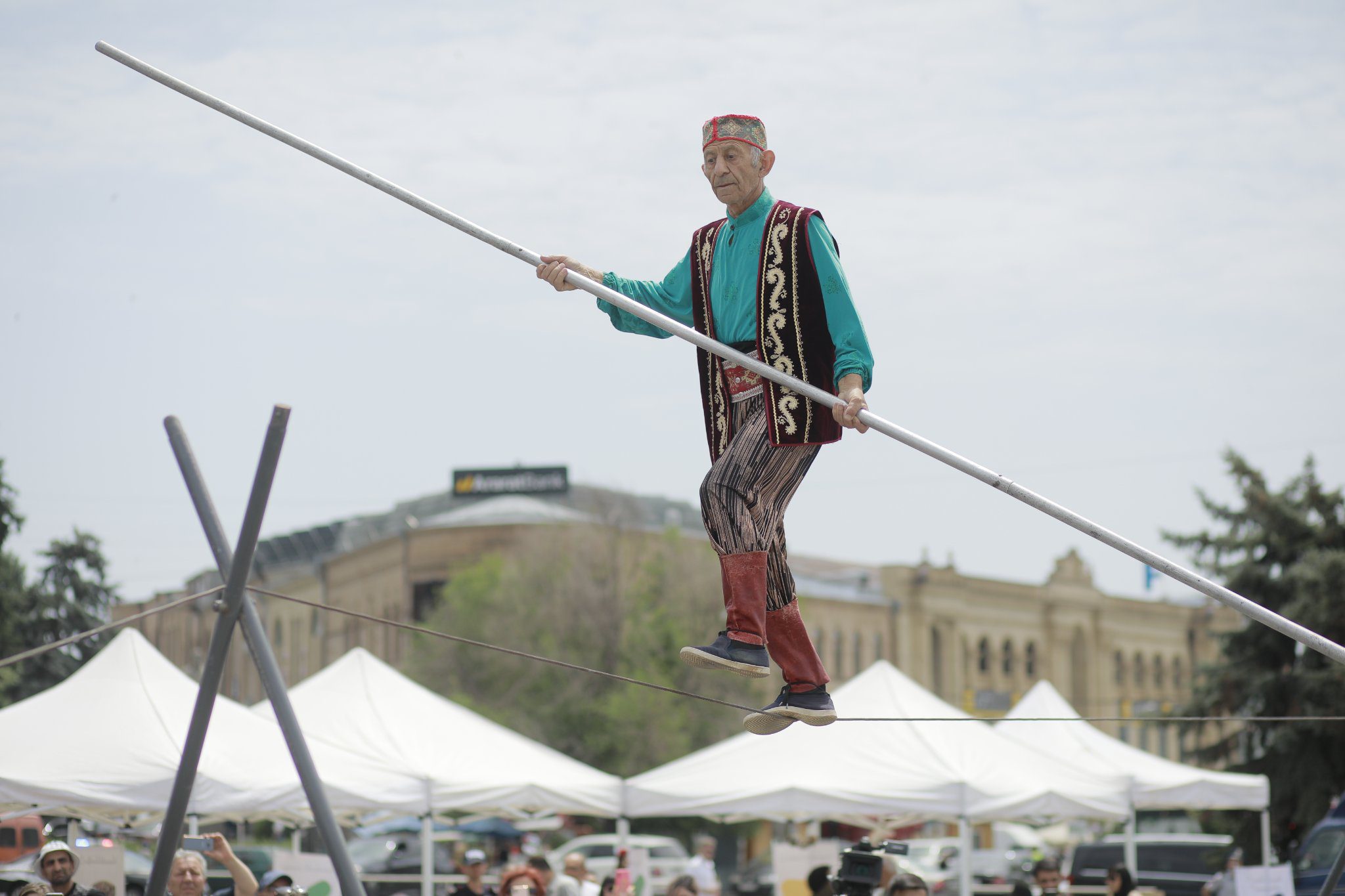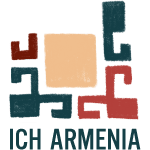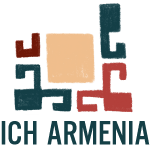
String dance occupies one of the most important places in the theatrical and dance performance of the Armenian people, whose roots go back to the pagan cult theater. Rope walker (pahlevan) – a pilgrim of St. Karapet. According to tradition, singers, gusans and string players of medieval Armenia were pilgrims to the monastery of St. Karapet in Mush. In fact, this cult tradition of the pagan period was Christianized, moreover, it was given the patronage of a Christian saint. The tightrope walker has a satin belt of red or apricot color. The neck was decorated with a white silk veil, a lace-embroidered collar and ribbons that had the shape of colored triangles and looked like flowers. They were papers with prayers. The performance begins with the playing of the zurna-dhol. The tightrope walker slowly and solemnly climbs the inclined wire. The stick and its straight body resemble a cross. The tightrope walker, going upstairs, performs a sacred rite, since he considers his work a kind of service to the saint. Having reached the end, the tightrope walker stops, brings the stick to his lips, as if kissing the cross, and, raising his gaze to the sky, turns to Saint Karapet, after which the right foot presses the rope, slowly moving it forward, then the left foot breaks away from the fulcrum, jumps on the other end of the rope and dances. While the tightrope walker is on the wire, a clown appears below. The tightrope walker and the clown are opposite characters: the tightrope walker is wise, all-powerful and selfless, while the clown is cowardly and ridiculous. In the course of the performance, the role of the clown becomes less and less, the role of the tightrope walker becomes more and more. Tightrope walking, like a medieval ritual game, has no causal course of events. This is a chain of independent episodes, the beginning and end of which we see in the gradual complication of tricks, which means the rise of the heroic, the affirmation of the divine and miraculous, and the defeat of the everyday in belittling the role of a clown. Rope walkers perform mainly at religious holidays near monasteries and churches. Today, tightrope walkers can be found in city squares, in the countryside. This area of folk representations of the pagan period is closely connected with the cult traditions of the peoples of the Near East and Asia Minor. The fact that the art of tightrope walkers-acrobats has been known since pagan times is evidenced by the work “Mother-in-Law” by the Roman comedian Publius Terentius (194-159 BC). The first evidence of this in Armenian bibliography is David Anhaght’s “Definitions of Philosophy”. He is rightfully considered the prototype of the theater and circus. After the adoption of Christianity, the church not only tolerated this art, but eventually began to sponsor it. String dancing has been one of the most active values in the life of the Armenian people for centuries and has been an integral part of the celebrations. She also experienced a certain upsurge in the Soviet period. Due to the socio-economic and cultural situation that developed in the first years of independence,
string dances lost their former importance and were on the verge of oblivion. Given that string playing was closely associated with the worship of St. Karapet, it was predominantly common in the Taronian world, especially among the people of Mush. Later it gained great popularity in all ethnographic regions. Today, tightrope walkers can be found in Kotayk, Gegharkunik, Aragatsotn regions of the Republic of Armenia, as well as in a number of old districts of Yerevan. Rope walking is a long, difficult learning process that requires good physical fitness.
On the other hand, there is a lack of information about this art in society, which is the reason for the decrease in interest in tightrope walkers. Young people are not sure that by becoming tightrope walkers they will be able to provide for their existence, therefore they avoid choosing the path of specialization in this art. Tightrope walking is one of the beautiful expressions of the national identity of the Armenian people.
Its preservation and the organization of activities that promote vitality will provide an opportunity to create a stronger bond between generations, as well as ensure that the international community is connected to the artistic and religious ideas and symbolic system of the Armenian people through tightrope walking.


